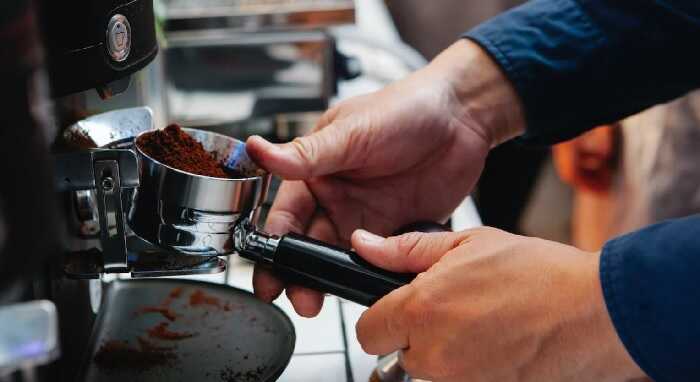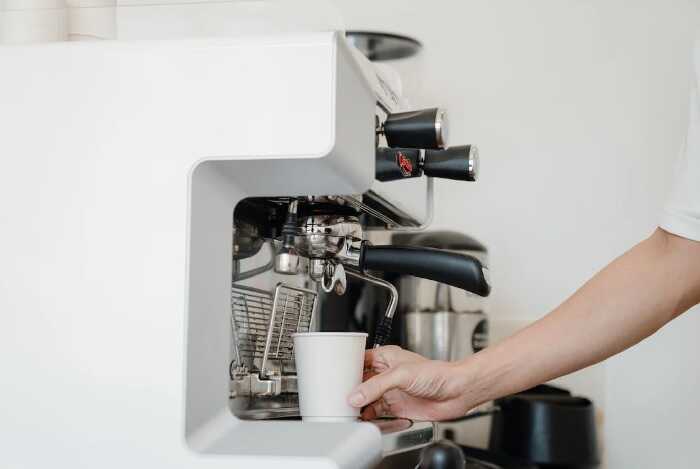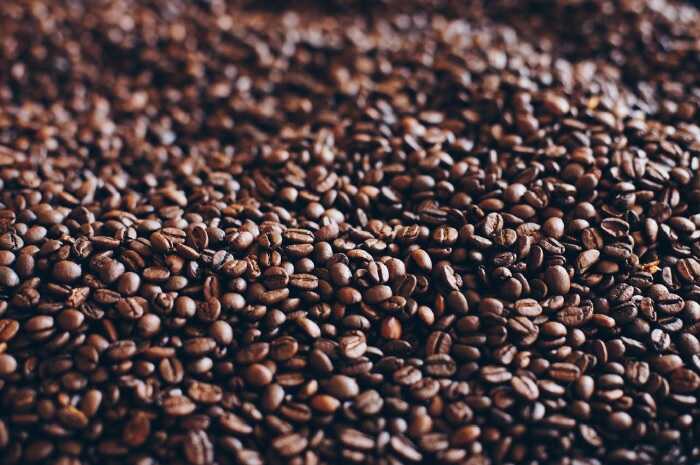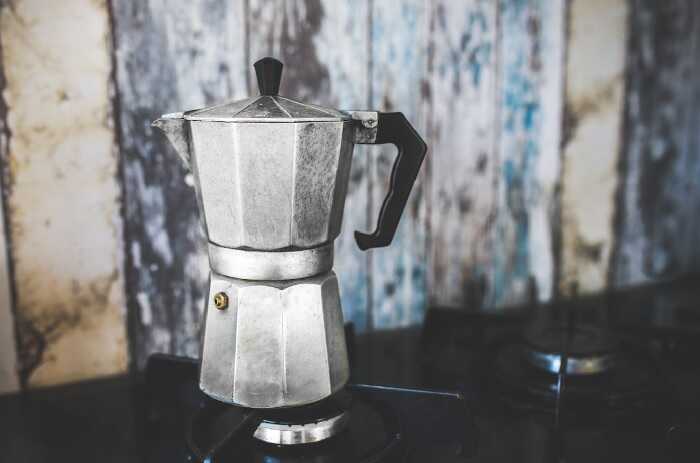Espresso is a unique beverage that is unlike anything else. It does like no other brewed hot drinks and usual coffee. Knowing how to use an espresso machine, enjoy homemade drinks in your style whenever you get the craving.
A top-notch maker will optimize the coffee’s aroma and uplift the natural sweetness in the brew. If you’re considering getting a coffee maker, what I share here will help you buy one that’s right and master coffee making.

Contents
How To Use An Espresso Machine: 4 Common Methods
Get to Know Your Rig
Perhaps, you’ve grabbed the basics of espresso well. But how about the coffee maker? I will throw a light on 7 main components of this machine:
Portafilter
A portafilter is a three-part device consisting of a handle, a portafilter basket, and a spigot. This is where you’ll put the coffee grounds to brew them.

Spigot For Heating Water
Hot water for tea and americanos gushes out of this spigot.
Shot Buttons
The portafilter takes clean water from the machine when you press these buttons. They are easy to use. Icons usually follow the pattern of a single long, single shot, double shot, and double long. Some cutting-edge models offer a “free pour” option and a hot water spigot.
Warming Rack
The majority of consumer-grade devices lack this function. There’s a heater on top of the rig for warming cups before pouring coffee inside.
Temperature & Pressure Dial
You, the end user, shouldn’t need them until something severe has occurred. Contact an expert on the spot to sort the issues out if things go beyond your ability.

Grouphead
Brewing coffee requires securing the portafilter to the group head. Multi-group head machines are used in big-size devices. Up inside the part are a rubber gasket and a metal filter. Nowadays, the E61 brew group is likely the most popular one.
Steam Wand
It is a long metal pipe used to emit and control the steam output with a lever and a knob. There might be more than one steam wand attached to a large machine.

Step-by-step Guide
Turn On And Preheat Your Maker
Before employing your machine, warm it wholly first. Some devices need 25 minutes for this stage, so start early.
To speed up the process, eliminate the espresso from the portafilter.
Measure And Grind Your Espresso Beans
Set the grinder of the machine to the correct grind size. Fill the portafilter with about 20 grams of coffee ground. Noting how much you used to keep the dial stage in consistently.
If you have a built-in grinder, it’s excellent for grinding into the portafilter at once.
Afterward, your portafilter basket should be piled high with the ground. Shave off excess coffee, push it into all corners, then smooth it down to apply pressure and tamp.

Tamp The Coffee Ground Until The Bed Is Even And Flat
Before tamping, spread your ground beans evenly. This may be done by softly hitting the portafilter with your palm or leveling the coffee grind with your fingertip.
Straight pressure is the key to a well-tamped espresso puck. You’ll need to apply pressure under 30lbs. Tamp until the earth stops settling, providing a flat top.
You’d better polish your puck level with a quick spin on your tamper. Brush off any excess coffee grounds on your portafilter, then brew!
Pull The First Shot
Time the shot to 2 ounces. 20-30 seconds for each pull is ideal.
If you’re here, you’ve brewed coffee. This first perfect shot is merely a baseline for the ideal flavor later.
Dial In The Shot
Good machines often show how effectively your shot was extracted.
In case no gauge is available, taste your espresso yourself. You can learn from the experience for the perfect drink later. For example, if the coffee pulls too fast, give it a try with a finer coffee grind the next time.
You’ll need to dial in again if you move between dark and light roasts. Darker roasts are simpler to over-extract and benefit from a finer grind. Use a nice knock box to dispose of the remaining grounds.
Pro Tip: Note the pressure on a machine’s gauge to help you better adjust your next shot’s pressure.
Steam Your Milk
Next, to steam milk for a macchiato, latte, cortadito, or cortado, a steam wand is a must. If not, try a milk steamer.
Pour cold milk into a stainless steel pitcher. Turn on your steamer wand to remove any moisture inside.
After that, put the steamer wand below the milk’s surface. Froth the milk to reach the expected consistency. Keep your wand below the surface till the end.
Once you see the frothy milk, dip the tip to the bottom and steam to the desired temperature. Wipe down and purge your wand to maintain hygiene.
Pro Tip: Heated milk is the cornerstone of foaming. Too little or too much will ruin the milk’s taste. Practice will help you sharpen your skills.

How does an espresso machine work? Watch this video to learn more:
What Do You Need For An Espresso Machine To Make Espresso?
Espresso Machine
No doubt, a coffee machine is a top priority. How can you lack this one to make your great coffee for an inspiring morning?
Pressure
Nothing is better than an espresso machine for pressure bars. A Moka pot generates 1.5 bars, and an Aeropress 0.35 to 0.7 bars. Perfect espresso requires 9 bars.
Be mindful that the coffee quantity, grind, and tamp all impact machine pressure.
Espresso Or Dark Roast Coffee Beans
What do you put in an espresso machine? Roast beans are indispensable! Prepare the high-class roast coffee beans you like most for perfect results.
Hot Water
Good espresso drinks must be made slightly below boiling to maximize the release of the beans’ oils and flavor components. This process is so-called extraction.
Too hot water can burn or scald the grounds, leaving a harsh taste. Set the brewing temperature to around 195 to 205 F for optimal results. Do not deviate from this standard range.
Coffee Grinder
Pick the Best Espresso Machine with Grinder for you! A perfect cup of coffee depends much on how fine you grind.
No wonder coffee brews never touch the level of espresso made by the specific machine. The more cautious you are, the more terrific the coffee’s aroma gets.

How To Use Stovetop Espresso Maker
Now that you’ve learned how to use espresso maker. Discover the stovetop espresso maker!
Step 1. Prepare A Moka Coffee Maker
The stovetop machine has three main parts:
- Lower water section
- Coffee-ground filter
- Upper chamber for completed coffee
Step 2. Grind The Coffee
Just coarsely grind coffee. The finer grind used for espresso might cause leaks and issues with your Moka pot.
Step 3. Add Water
Fill your stove maker chamber’s lower part with filtered and cold water. Don’t overfill the safety valve.
Step 4. Fill The Filter Basket
Fulfill the filter basket completely with coffee grounds. Underfilling might cause problems during the brewing process.
Step 5. Reassemble The Unit

Place your filter basket in the chamber’s bottom. Screw the base and top chambers with a towel and ensure the gap between units.
Be cautious holding your chamber with a cloth due to the hot water from an aluminum Moka pot.
Step 6. Add Heat!
It’s all simple! Wait for the water in your stovetop espresso maker to boil before using it. Most units are small in size, so this won’t take long.
You must be there until the water boils. Be cautious not to melt a gas stove’s plastic handle.
Step 7. Enjoy
When you hear gurgling, the water has completed the short, hot trek north and filled the top chamber with a flavorful espresso.
In other words, this sound tells you the time to remove the maker and pour.
Can I Use Regular Ground Coffee In An Espresso Machine?
Yes, absolutely. However, espresso blends are mainly intended to be low acidity, whereas the regular type meant for more plebeian extraction techniques could embrace their high acid character.
As a result, employing a machine for this coffee type can lead to sour coffee cups and may be tricky to fix.
When exposed to air, coffee’s oils and chemicals break down fast, resulting in a murky, bitter brew. You may not want that.

The Bottom Line
And now that you’ve got the insights into how to use an espresso machine. Espresso is rich, milky, and aromatic. You’ll master brewing skills with patience and a learning mindset.
To discover other exceptional coffee makers? Check out your favorite YouTube channels for more handy information.
Other guys might also be eager for this sharing like you. Please share it with them! ()

